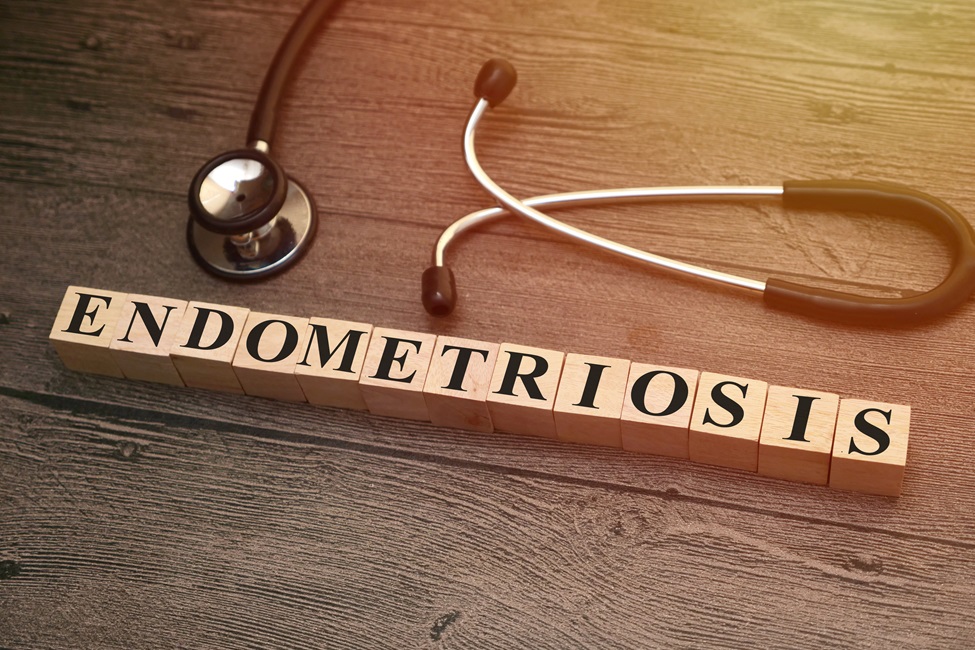Emerging Diagnostic Tools for Early Diagnosis of Endometriosis

Endometriosis is a common, burdensome, chronic disease that affects more than 11% of women of reproductive age in the United States and 190 million women worldwide. Early diagnosis remains a major clinical and public health challenge. The average time to diagnose endometriosis is seven years after the onset of symptoms, which include abdominal pain and cramping before, during and after menstruation, among others.
Endometriosis occurs when tissues normally found inside the lining of the uterus migrate and grow in other locations, most commonly the ovaries, fallopian tubes and other organs. These circumstances may cause life-altering consequences such as chronic pain, infertility and quality of life.
In a commentary published in The Journal of Reproductive Medicine, Gynaecology & Obstetrics, researchers from Florida Atlantic University’s Schmidt College of Medicine and collaborators, conducted a PubMed search to identify promising approaches for early diagnosis of endometriosis.
“Currently, diagnosing endometriosis involves a thorough review of the patient’s medical history and physical examination,” said Panagiota “Yiota” Kitsantas, Ph.D., first and corresponding author as well as professor and chair of the Department of Population Health and Social Medicine, FAU Schmidt College of Medicine. “The most commonly used and accurate diagnostic methods are pelvic exams, abdominal ultrasound, MRI and laparoscopy. Laparoscopic surgery is considered the gold standard for diagnosing endometriosis by gynecologists, but it can be expensive and carries potential risks of surgical complications. Moreover, the accuracy of laparoscopy can vary based on the surgeon’s experience and the stage of the disease.”
The authors say the ideal test for early diagnosis of endometriosis would be to use symptom-based criteria to determine who should undergo testing and then set optimal cut-points to maximize sensitivity and specificity. A test with high predictive value would accurately confirm endometriosis if positive and exclude it if negative. Although less ideal tests may not provide definitive results, they can be useful in reducing the number of patients who need to proceed to more invasive procedures, like laparoscopy.
Endometriosis involves hormonal imbalances that trigger angiogenesis, apoptosis, immune responses, and inflammation. Diagnostic tools for endometriosis have been developed to detect biomarkers, such as mRNA fragments in blood and saliva, but these have shown low accuracy.
“Non-invasive methods like MRI and transvaginal ultrasound are only effective for advanced stages of endometriosis,” said Charles H. Hennekens, M.D., co-author, the first Sir Richard Doll Professor of Medicine and Preventive Medicine in the Departments of Medicine and Population Health and Social Medicine and senior academic advisor, FAU Schmidt College of Medicine. “Recent research has focused on a novel noninvasive method of detecting myoelectric activity in the gastrointestinal tract as a potential diagnostic tool. Electroviscerography or EVG could detect unique myoelectric patterns associated with endometriosis, though this approach is promising but unproven.”
Currently, there is no FDA-approved non-invasive test for endometriosis, and further analytic studies leading to peer-reviewed publications are needed to refine these emerging technologies and establish effective diagnostic criteria.
“Early diagnosis of endometriosis remains a challenge, with a succession of promising approaches ultimately not bearing fruit thus far,” said Kitsantas. “Once new technologies such as EVG are more fully evaluated, they may give clinicians the post-test certainty they need to transition from symptom-based to diagnosis-based treatment.”
Co-authors are Katerina N. Benson, a pre-medical student at FAU; Sadine Al-Farauki, a recent FAU graduate and entering medical student at Ross University School of Medicine; Michelle Keba Knecht, senior medical librarian, FAU Schmidt College of Medicine; and Lee A. Learman, M.D., Ph.D., professor of obstetrics and gynecology and dean, Virginia Tech Carilion School of Medicine.
-FAU-
Latest Research
- 'Wood You Believe It?' FAU Engineers Fortify Wood with Nano-IronWith more than 181.5 billion tons of wood produced globally each year, a research breakthrough using nano-iron could pave the way for eco-friendly alternatives in construction materials, furniture and more.
- FAU Engineering Lands U.S. DOD Grant for Testing Connected AI AutonomyThe Center for Connected Autonomy and Artificial Intelligence will develop a platform for testing connected AI autonomy, placing FAU as a national leader in next-gen networked AI autonomous systems research.
- FAU Student Places Second at 3MT® CompetitionFlorida Atlantic University's Omair Faqah, a Ph.D. candidate in the College of Engineering and Computer Science, recently took second place in the statewide Three Minute Thesis (3MT®) Competition.
- Toxic Blooms in Motion: Study Maps Algae Patterns in Lake OkeechobeeFAU Harbor Branch researchers used an advanced physical-biogeochemical model to track daily movements of harmful algal blooms in Florida's largest freshwater lake, vital to the region's hydrological balance.
- Soaring Insurance Costs Top Concern for Floridians, FAU Survey FindsA new FAU survey finds more than two-thirds of Floridians are worried about stronger, more frequent hurricanes, and more than half are concerned about affording and keeping homeowners insurance.
- FAU Seeks Infants for Study on How Humans Learn to Shape Their WorldTo further their groundbreaking research on how babies discover their ability to influence the world, FAU researchers are seeking infants aged 2 to 4 months to participate in a study along with their parents.






